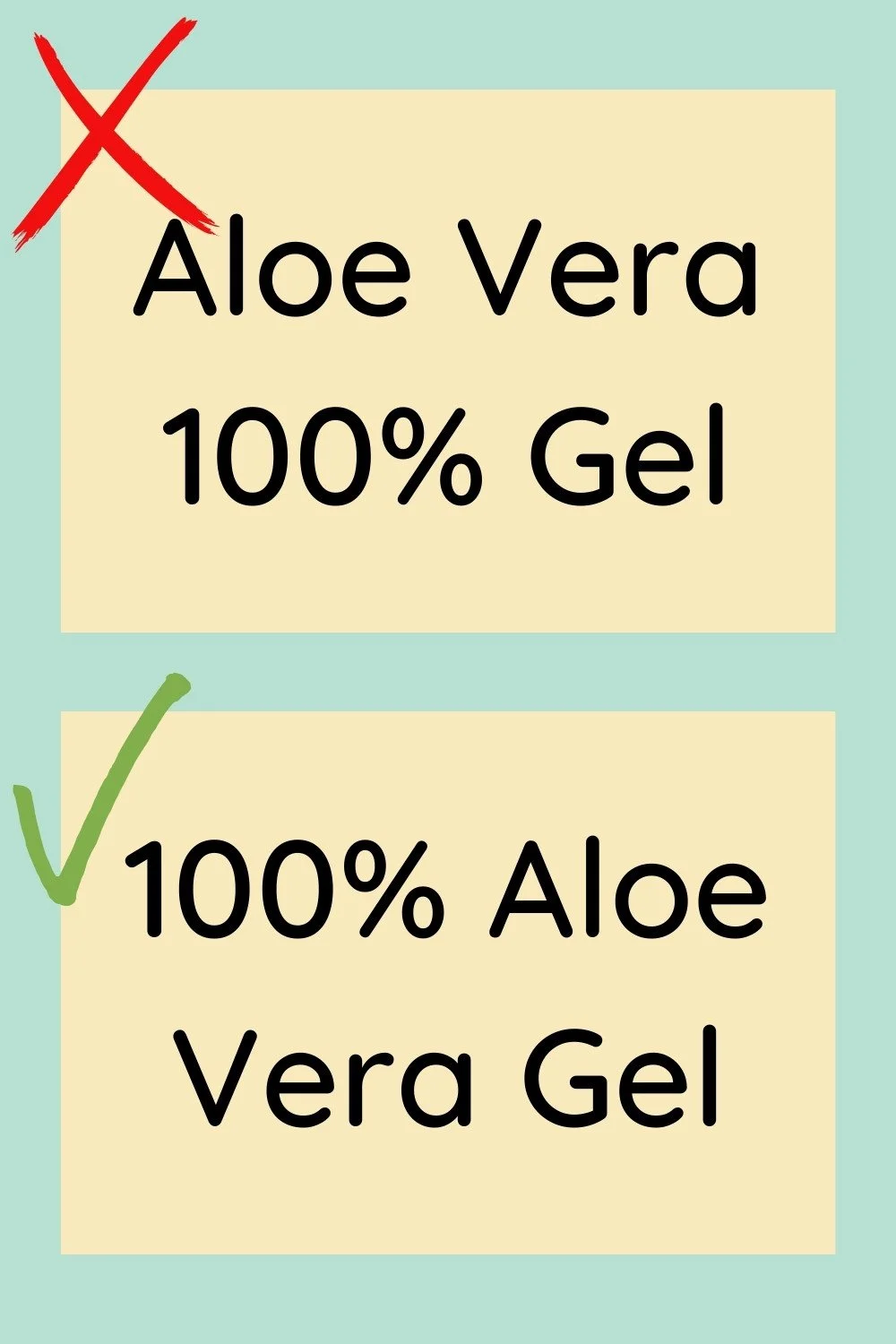What’s in Your Aloe Vera Gel?
Aloe vera is a succulent plant is well-known for its healing properties. The gel inside the leaves contains vitamins, amino acids, mucopolysaccharides, and other nutrients that are moisturizing and anti-inflammatory. Not to mention its cleansing qualities or nutritional benefits!
That’s why an overwhelming number of brands have taken aloe vera and bottled it up. They slap on an ‘aloe vera gel’ label and sell it as a natural skincare product.
But how natural is it?
The Problem With Commercial Aloe Products
If you are reading this post, you are probably aware that many aloe vera gels have a giant list of added ingredients. Yucky ingredients like dyes and alcohol that really don’t need to be there.
Below, I’ve listed some of the top ingredients you should look out for.
Powdered Aloe Vera (Concentrate)
Aloe vera isn’t exactly the easiest product to transport. Once the leaves are cut open, the gel fillets have to be refrigerated. Even then, they have a very short shelf life until they are blended and combined with stabilizers and preservatives.
So, sometimes this process is made easier by drying the inner leaf fillets and grinding them to a powder. The concentrated aloe vera powder is easier to transport than the refrigerated gel and can be added to water to recreate a gel.
The problem? Once dried, aloe vera loses a lot of its beneficial properties. The process destroys many of the plant’s active compounds, and the resulting products are often less than 10% aloe vera.
Thickening Agents
Does your aloe vera gel feel like a thick gel? Then it is full of thickeners.
Pure aloe vera, once blended, forms a watery yet pulpy solution.
Of course, a pulpy liquid isn’t exactly sexy skincare. So most brands add thickeners to their aloe vera gel. Thickeners aren’t always a bad thing—but sometime aloe vera gels have more thickener than aloe.
“Some companies trick you with wording. “100% Gel” means that it's pure gel, not pure Aloe Vera.” — Plunkett Pharmaceuticals
Carbomer is a common thickener in aloe vera gels. Unlike naturally-derived thickeners like agar or xanthan gum, carbomer is a synthetic chemical. Another thickener to look out for carrageenan, a seaweed extract that is generally safe when applied topically, but can cause allergic reactions if you are allergic to mammals.
Green Dyes
Have you ever noticed some aloe vera products are clear and some are green? Yikes! What’s going on here?
Aloe vera gel is naturally a pale, very light, yellow-tinted gel. So where do all of these blindingly bright green products keep coming from? The unnatural color would be due to synthetic dyes.
On the other hand…aloe vera isn’t crystal clear either. So products that are completely lacking color don’t have much aloe vera in them either.
Glycerin & Alcohol
One way aloe vera gels can get away with a low aloe vera content is by using glycerin and alcohol. Glycerin is a clear liquid carbohydrate that has hydrating qualities – meaning it mimics the effects of aloe vera. Meanwhile, alcohol mimics aloe vera’s cooling effects.
If you use products with a high glycerin and alcohol content, then sure, your skin will feel cool and hydrated. But you’ll be missing out on all of the nutrient benefits of aloe vera.
Other Ingredients to Watch for
Some other ingredients you might want to watch out for are triethanolamine, fragrances, diazolidinyl urea, DMDM hydantoin, and polysorbate 20.
And in case you’re wondering—if water is the first ingredient on the label, put the product back on the shelf. A little aloe with your water isn’t going to do much good.
Not All Ingredients Are Bad…
As it turns out, not all ingredients are bad. Fresh aloe vera has a very short shelf life, meaning that it needs stabilizers and preservatives to make it last. And without a thickener, it doesn’t have a pleasant texture. So it’s necessary to add a few extra ingredients.
When shopping for aloe vera gel, look for a short ingredient list and natural additives instead of synthetic chemicals.
First, make sure aloe vera is at the top of the ingredients list. When it comes to thickeners, check for safe and naturally-derived thickeners like xanthan gum and agar. For preservatives, citric acid and ascorbic acid (a fancy name for Vitamin C) are natural preservatives that are safer than most chemical preservatives. Lastly, potassium sorbate is a natural antimicrobial.
Look for products with these ingredients, and you can’t go wrong!


